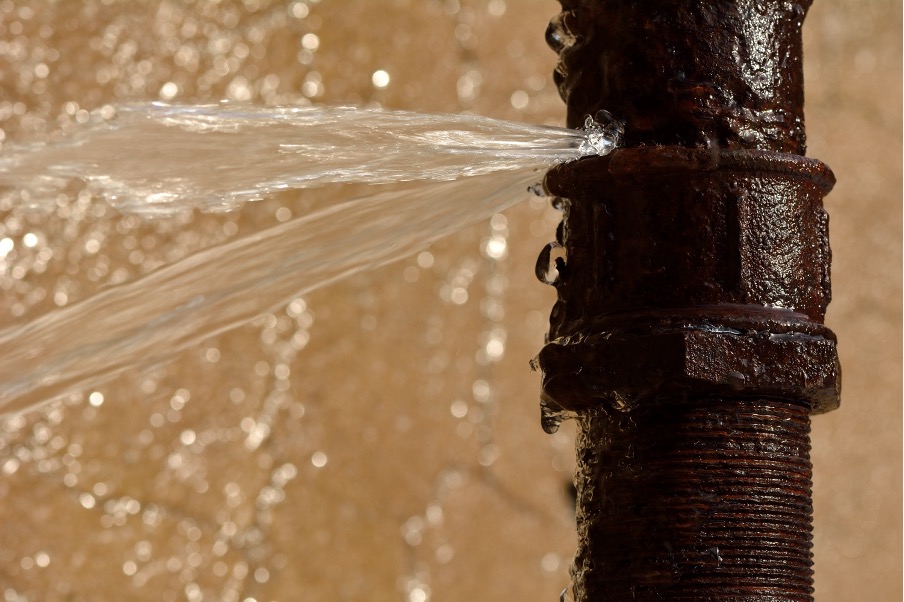Six Proven Ways to Detect Hidden Water Line Leaks Stealthily
Six Proven Ways to Detect Hidden Water Line Leaks Stealthily
Blog Article
They are making several good pointers relating to Locating water leaks as a whole in this post which follows.

Early discovery of dripping water lines can mitigate a potential calamity. Aside from saving you cash, it will decrease the worry and aggravation. The minute you discover a leak, calling your plumber for repair work is the best option. Nevertheless, some tiny water leakages may not show up. If you can not find it with your naked eyes, right here are some hacks that help.
1. Analyze the Water Meter
Every home has a water meter. Examining it is a surefire way that helps you find leaks. For beginners, shut off all the water sources. Guarantee nobody will certainly purge, use the tap, shower, run the washing device or dishwasher. From there, go to the meter and watch if it will certainly transform. Since nobody is using it, there need to be no activities. If it moves, that suggests a fast-moving leak. Furthermore, if you identify no changes, wait an hour or two and examine back once again. This means you may have a slow leakage that can even be underground.
2. Examine Water Usage
Examine your water expenses and also track your water intake. As the one paying it, you need to see if there are any type of inconsistencies. If you find sudden changes, regardless of your intake coinciding, it suggests that you have leakages in your plumbing system. Remember, your water costs need to fall under the same array every month. A sudden spike in your expense suggests a fast-moving leakage.
On the other hand, a consistent rise each month, despite the very same practices, shows you have a slow-moving leakage that's likewise slowly escalating. Call a plumber to completely inspect your residential property, specifically if you feel a cozy location on your flooring with piping beneath.
3. Do a Food Coloring Test
When it comes to water usage, 30% comes from toilets. If the color somehow infiltrates your dish throughout that time without flushing, there's a leak between the tank as well as dish.
4. Asses Exterior Lines
Do not neglect to examine your outdoor water lines also. Needs to water seep out of the connection, you have a loosened rubber gasket. One tiny leak can lose bunches of water as well as increase your water expense.
5. Check as well as Analyze the Scenario
Home owners ought to make it a habit to inspect under the sink counters as well as also inside cabinets for any bad odor or mold and mildew growth. These 2 warnings suggest a leakage so timely interest is needed. Doing regular evaluations, even bi-annually, can save you from a significant trouble.
Examine for discolorations as well as compromising as most pipelines and also home appliances have a life expectations. If you presume leaking water lines in your plumbing system, don't wait for it to intensify.
Early detection of dripping water lines can reduce a potential catastrophe. Some little water leaks might not be noticeable. Inspecting it is a proven way that helps you find leakages. One little leakage can lose heaps of water and also surge your water costs.
If you suspect leaking water lines in your plumbing system, don't wait for it to rise.
WARNING SIGNS OF WATER LEAKAGE BEHIND THE WALL
PERSISTENT MUSTY ODORS
As water slowly drips from a leaky pipe inside the wall, flooring and sheetrock stay damp and develop an odor similar to wet cardboard. It generates a musty smell that can help you find hidden leaks.
MOLD IN UNUSUAL AREAS
Mold usually grows in wet areas like kitchens, baths and laundry rooms. If you spot the stuff on walls or baseboards in other rooms of the house, it’s a good indicator of undetected water leaks.
STAINS THAT GROW
When mold thrives around a leaky pipe, it sometimes takes hold on the inside surface of the affected wall. A growing stain on otherwise clean sheetrock is often your sign of a hidden plumbing problem.
PEELING OR BUBBLING WALLPAPER / PAINT
This clue is easy to miss in rooms that don’t get much use. When you see wallpaper separating along seams or paint bubbling or flaking off the wall, blame sheetrock that stays wet because of an undetected leak.
BUCKLED CEILINGS AND STAINED FLOORS
If ceilings or floors in bathrooms, kitchens or laundry areas develop structural problems, don’t rule out constant damp inside the walls. Wet sheetrock can affect adjacent framing, flooring and ceilings.
https://www.servicemasterbyzaba.com/blog/how-to-detect-water-leakage-in-walls/

I hope you liked our section on Leaking water lines. Thank you for finding the time to read our piece. Do you know about another individual who is inquisitive about the topic? Be sure share it. I am grateful for your time. Please come visit our site back soon.
Top service, dial! Report this page